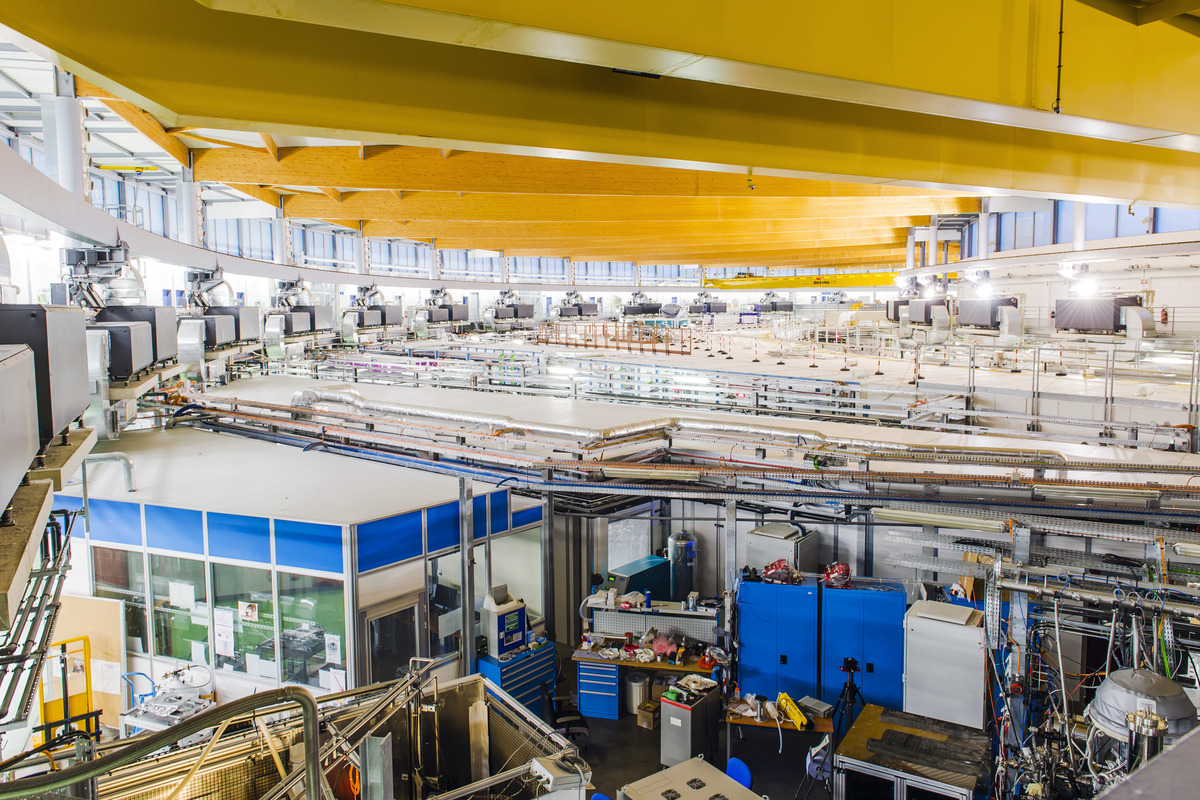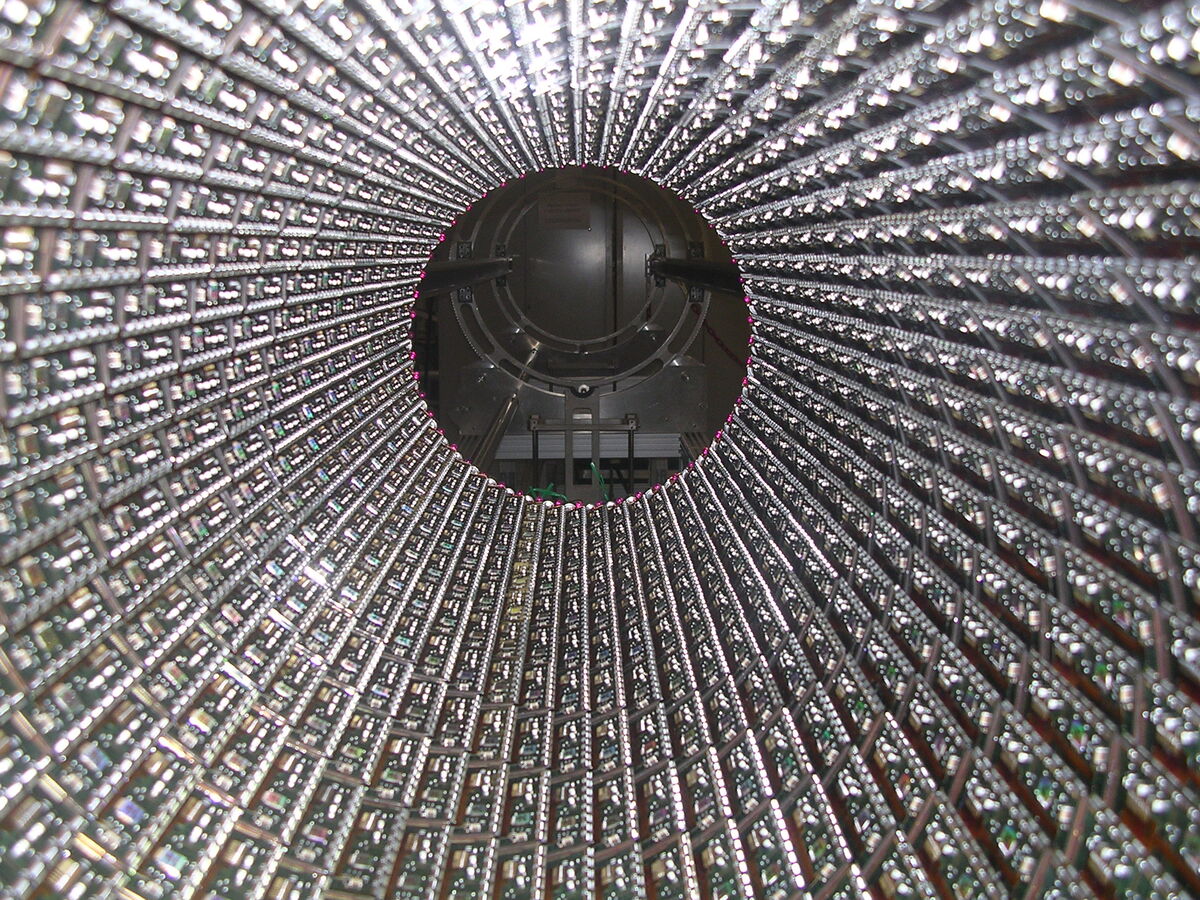Infra
“Infrastructures are an essential pillar of Europe’s research strategy”.

“European research infrastructures are unique, innovative research tools for the European scientific community,” explains Paolo Laj, coordinator of the dedicated CNRS working group on European research infrastructures (RIs)
. He is well aware of the importance of these infrastructures which include Universe or environmental observatories, particle accelerators, including synchrotron light sources or digital services. Over the years these have enabled major scientific progress to be made in many ranging from the physical sciences and engineering to the humanities and social sciences and including life sciences and health.
Colossal budgets a single state could not support alone
The ESFRI landmark label
has been awarded to around forty research infrastructures
in Europe and France takes part in and contributes to virtually all of them. The partner states involved in these RIs fund their construction and are responsible for their operational management. “Europe’s role focuses more on structuring and coordination with indirect intervention in terms of support through various programmes and calls for projects,” explains Michel Guidal, the chairman of the CNRS Very Large Research Infrastructures (French acronym, TGIR) Committee.
RIs can be characterised by a number of key features, including a concentration of cutting-edge scientific and human resources, research excellence and clearly identified governance and steering bodies. They make it possible to pool high-level technical and methodological expertise for these unique instruments which are essential to effectively implement the European long-term scientific and thus require budgetary security and safeguards. “One of the notable examples of European landmark RIs is the European Spallation Source (ESS) in Sweden. This is a neutron source with a €3 billion that no EU country could afford alone,” stresses Michel Guidal. Several European landmark RI facilities are hosted in France, including the ESRF European Synchrotron, the Institut Laue-Langevin (ILL), the European Molecular Biology Laboratory (EMBL), the Institut de Radio-Astronomie Millimétrique, the National Large Heavy Ion Accelerator in Caen, the Apollon laser on the Saclay campus and GENCI, the Very Large-Scale Computing Centre. “A great deal of cutting-edge research has derived from RIs and several Nobel Prizes are associated with them. The Higgs boson was discovered at the CERN and five scientists using the ESRF have received 5 Nobel Prizes,” details Michel Guidal.
Supporting research infrastructures at the European Commission
The CNRS strongly supports the importance of RIs and has set up an Infrastructure working group as part of its European strategy. “Our role is to make sure France has an active presence in the European Commission’s calls for tender,” explains Paolo Laj. He leads the Infrastructure mirror group set up in 2021 that has worked on a series of issues to encourage CNRS researchers’ involvement. “We define CNRS priorities in advance, give advice on calls for projects to prepare work programmes and support the community in understanding and taking on board the issues involved,” he explains. This strategy seems to be bearing fruit as the CNRS noted an increase in the number of French projects submitted and funding granted in the framework of the European Commission’s latest call for projects for the 2022-2023 period.
Strengthening Europe’s scientific and technological sovereignty
Paolo Laj underlines Europe’s “undeniable importance for infrastructure.” The European Union does not fund these infrastructures directly but does play a crucial role by funding the processes involved in creating or upgrading them. These range from the phase of analysing the requirements of the communities involved to the administrative and scientific implementation of infrastructures. It also entails running projects that fund access to such infrastructures and thus financially supporting their usage. Examples like the internationally-renowned CERN and the ESRF illustrate the scale of the major RIs whose existence was made possible by this type of European collaboration.
“The European Union has a significant impact on research infrastructures particularly through its Framework Programmes for Research and Innovation (FPRI) which provide funding for various targeted projects that use RIs,” adds Michel Guidal. There are numerous technological spin-offs, a fact which once again highlights how RIs are the pillars of fundamental science and also drive industrial and economic development. He goes on to explain that “it is not rare to see companies or start-ups collaborating with these infrastructures to carry out experiments and innovative research or taking part in developing of some of the facilities involved in an RI.” This interaction contributes to strengthening Europe’s scientific and technological sovereignty by avoiding an excessive dependence on private companies particularly in key areas like artificial intelligence. For example, European exaflop-scale supercomputers like the Alice Recoque supercomputer due to be installed at the French Alternative Energies and Atomic Energy Commission’s (CEA) premises in the Essonne region illustrate the importance of developing advanced computing capabilities at the European level to remain competitive in a rapidly evolving digital environment
.
RIs also play a crucial role in the education and high-level training of scientists. They help disseminate a research and innovation culture by offering learning and international collaboration opportunities. “The involvement of less economically developed countries in such projects facilitates those countries’ integration and helps reduce scientific and technological disparities within the European Union.”

Promoting open science is also a fundamental value associated with RIs which encourage the sharing of knowledge and collaboration between researchers both in European and worldwide. The European Open Science Cloud (EOSC) (see box) is a major tool for the implementation of open science policy in Europe and has actually inspired the United States to develop its own similar structure. The EOSC represents a successful federative model that is only made possible by effective European collaboration.
Developments and data
However RIs also need to find solutions to a series of crucial issues so they can remain at the highest level internationally and respond to changing research requirements. “The very foundation of these infrastructures is based on economies of scale. This means they have to remain attractive to researchers and potential users,” explains Paolo Laj. To achieve this, RIs have to respond to the scientific community’s evolving needs which may call for significant investment. For example, the ESRF recently installed new light lines and technologies on its accelerator to keep it at the cutting edge of research as the leader in its field today. In the humanities and social sciences, infrastructures like HUMA NUM and PROGEDO for digital humanities always need to carry out more and more studies in response to the growing needs of researchers in their field. “All RIs have to evolve and this evolution requires them to demonstrate their usefulness to the scientific community so they can obtain adequate financing,” he adds. The aim of the European Strategic Forum for Research Infrastructure(ESFRI) roadmap is to support a coherent approach to equipping world-class RIs that none of the EU Member States could afford to finance alone. This makes the ESFRI one of the strategic tools required to effectively respond to these challenges. Several RIs have benefited from the ESFRI including the ACTRIS infrastructure for atmospheric research (see box) which involves over 200 research organisations from 17 countries.
Another major challenge facing infrastructures is data management because “these infrastructures produce massive quantities of data, either physically or virtually. These data are of considerable value to research but are complex and costly to manage“. This requires significant human and technological resources to ensure effective data collection, storage, analysis and sharing. RIs play a crucial role in this aspect of research and are indeed often compared to an ‘academic Google’. Initiatives like EOSC – which aims to provide a data system for European research – are essential to facilitate the large-scale access to and use of research data.

FP10: “The Commission can’t simply walk away from what it helped to build”.
”In the context of the upcoming FP10
, there is a risk that the European Commission might consider it has accomplished its mission and thus reduce its funding for infrastructures,” explains Paolo Laj. “It’s therefore essential to remember these infrastructures are essential research tools for finding responses to tomorrow’s scientific questions and must remain sustainable.” The first pillar
of the programme funds basic research and in this framework the Commission will need to carry on helping Member States maintain and develop these infrastructures. This means developing new technologies and recognising that research requirements constantly evolve.
The European Research Infrastructure Consortium
(ERIC) agreement facilitates the creation and management of European research infrastructures and is crucial to achieving this objective. It is important to note that the Commission “can’t simply walk away from what it helped to build” and that EU member states cannot individually provide the resources required to maintain these infrastructures. This makes it crucial to maintain an agile system steered by the Commission so these RIs can continue to operate effectively. The Commission could play a crucial role here by supporting collaborative projects involving use of research infrastructures. “These projects should be open to all stakeholders who need to use these RIs for their work with the Commission setting up financial mechanisms to facilitate that usage. This would ensure these infrastructures remain accessible and are optimally used for European research,” says Paolo Laj.










